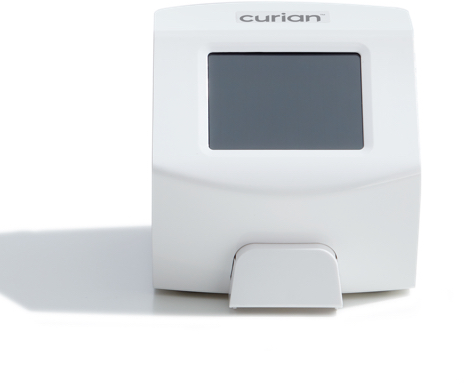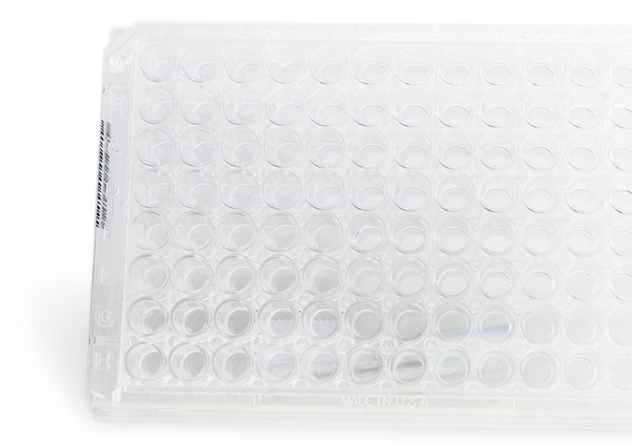Campylobacter Testing
Definitive Answers. Confident Results.
Campylobacter (Campy)
Campylobacter infection, commonly acquired from undercooked poultry or contaminated water, can cause gastroenteritis with symptoms such as diarrhea, abdominal pain, and fever. It is one of the leading bacterial causes of foodborne illness worldwide. Early diagnosis and appropriate treatment are crucial in reducing the risk of complications and facilitating recovery.
Campylobacter is recognized as the leading cause of bacterial foodborne illness globally, responsible for an estimated 96 million cases annually.2
While Campylobacter infections are typically self-limiting, they can lead to severe or even fatal outcomes in infants, older adults, and individuals with weakened immune systems.3
For every laboratory-confirmed case of Campylobacter infection, an estimated 26 cases go undiagnosed, underscoring the extent of underreporting and the critical need for improved testing and surveillance.4
Rapid immunoassay testing solutions for Campylobacter
Rapid immunoassays offer laboratories a streamlined workflow and accurate results in as little as 20 minutes, eliminating the time-consuming, labor-intensive processes associated with traditional culture methods
Meridian Bioscience’s Campylobacter diagnostic solutions offer exceptional accuracy and flexibility for detecting Campylobacter infection. Our advanced testing enhances both the efficiency and precision of diagnosis, supporting timely and effective patient management.
Curian® Campy

Immunocard STAT!® CAMPY

Premier® CAMPY

Learn more about Campylobacter
Meridian Bioscience Foodborne Webinar Series Campylobacter Enteritis and Laboratory Methods for Its Diagnosis- Is There a Best Way?
Education and Outreach tools to learn more about Campy testing
As dedicated partners in enhancing patient care, we take pride in our diverse diagnostic portfolio and go further by offering educational content and tools, leveraging our expertise to boost testing utilization and support our partners comprehensively.
FAQs
What is Campylobacter and why is it important to test for it?
Campylobacter is one of the most common bacterial causes of gastroenteritis worldwide. Infections can lead to symptoms like diarrhea, abdominal cramping, fever, and in rare cases, complications like Guillain-Barré syndrome. Accurate and timely testing is essential for effective diagnosis, treatment, and infection control.
How is Campylobacter diagnosed?
Traditionally, Campylobacter is detected using stool culture, which is slow, labor-intensive, and requires special conditions (e.g., microaerophilic environment). Today, rapid immunoassays and fluorescent immunoassays provide a faster and more reliable alternative for detecting Campylobacter antigens directly from stool samples.
Who should be tested for Campylobacter?
Testing is recommended for patients with acute diarrhea, especially if symptoms include bloody stools, persistent fever, or recent travel or foodborne exposure. It’s particularly important in immunocompromised individuals, children, and the elderly.
What are the benefits of rapid Campylobacter testing compared to culture methods?
Rapid assays can provide results in as little as 20 minutes, improving turnaround time for clinical decisions. They require less specialized equipment, reduce subjectivity, and improve detection compared to culture, which can miss cases due to the fastidious nature of Campylobacter.
Can Campylobacter testing be performed alongside other GI pathogen tests?
Many modern diagnostic platforms allow for side-by-side testing of multiple gastrointestinal pathogens. Pairing Campylobacter testing with other assays, like Shiga toxin, C. difficile, or Crypto/Giardia, provides a more comprehensive picture of GI illness, especially in patients with nonspecific symptoms.
Why is early detection of Campylobacter important?
Early diagnosis reduces unnecessary antibiotic use, supports appropriate patient care, and minimizes the risk of complications. It also allows for faster epidemiological response during suspected outbreaks or foodborne illness investigations.
References:
- Fennerty, M. B. Helicobacter pylori: why it still matters in 2005. Cleveland Clinic Journal of Medicine, 2005; 72(Suppl_2), S1-7. https://doi.org/10.3949/ccjm.72.suppl_2.s1.
- Centers for Disease Control. MMWR (October 1997) Knowledge About Causes of Peptic Ulcer Disease—United States, March-April 1997. https://www.cdc.gov/mmwr/preview/mmwrhtml/00049679.htm. Accessed June 9, 2022.
- Helicobacter and Cancer Collaborative Group. Gastric cancer and Helicobacter pylori: a combined analysis of 12 case control studies nested within prospective cohorts. Gut. 2001 Sep;49(3):347-53. doi: 10.1136/gut.49.3.347. PMID: 11511555; PMCID: PMC1728434.
- The Lancet. Chronic Disease Management in Aging Populations. Available at https://www.thel ancet.com/journals/lancet/article/PIIS0140-6736(12)60790-9/fulltext. Accessed on June 9, 2022.
- Chey WD & Wong BCY. Practice Parameters Committee of the American College of Gastroenterology. American College of Gastroenterology guideline on the management of Helicobacter pylori infection. Am J Gastroenterol, 2007; 102(8):1808-1825
- American Cancer Society. Key Statistics for Stomach Cancer. Available at https://www.cancer.org/cancer/stomach-cancer/about/key-statistics.html Accessed June 9, 2022
- Chey, W. D., Leontiadis, G. I., Howden, C. W., & Moss, S. F. ACG Clinical Guideline: Treatment of Helicobacter pylori Infection. American Journal of Gastroenterology, 2018; 113(7), p1102. doi: 10.1038/s41395-018-0132-6
- Talley, N. J. American Gastroenterological Association Medical Position Statement: Evaluation of Dyspepsia. Gastroenterology, 2005; 129(5):1753–1755. https://doi.org/10.1053/j.gastro.2005.09.019